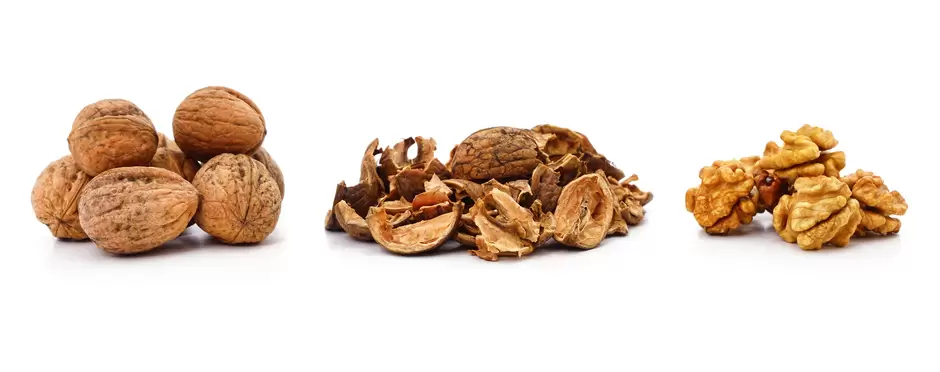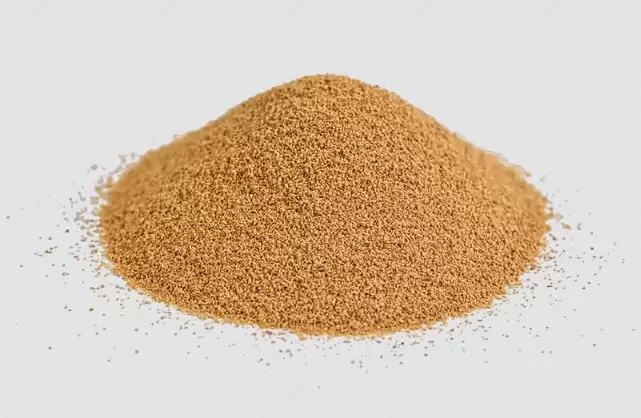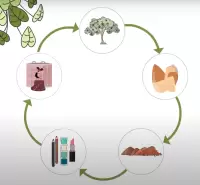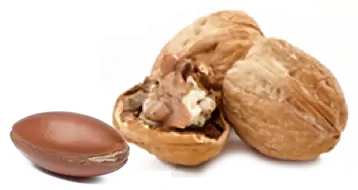Walnut Shells as Preferred Biodegradable Abrasive
Customers often approach us with a clear goal in mind: to use walnut grit as a biodegradable abrasive. Especially the skincare industry is making progress towards microbead-free product, which is why walnut shell particles seem an obvious choice.
Walnuts are grown mostly in Asia, North America and, to some extent, in Europe. Therefore, repurposing the shell has become a common practice, and many personal care brands have used walnut grit for exfoliants or beaded hand cleaners. Also, ground walnut shells are an effective bio-alternative to glass, metal or mineral particles in industrial abrasive applications (e.g. sandblasting media walnut shells).
The availability of walnut shells across continents has probably been the main reason for their popularity. Also, China holds a competitive advantage due to availability and cost-effective manufacturing. It is therefore not surprising that the market for nutshell powders and granules has flourished.

Whole walnuts, walnut shell, walnut kernel
Nut Allergens: Is the Nutshell an Actual Risk?
This being said, studies reveal that around 5 % of the world’s population is allergic to tree nuts. Tree nuts with multiple allergens are walnuts and hazelnuts, whereas individual allergens can also be found in other nuts (e.g. macadamia, coconut, and Brazil nut). Allergens are proteins that induce hypersensitivity and sometimes life-threatening reactions such as respiratory distress.
There are controversial opinions on whether the shells of tree nuts are allergenic. Due to their composition of lignin and cellulose, they are low in protein as opposed to the edible kernels. It is therefore often claimed that there is no risk associated with walnut shell granules. Taking a look at the processing techniques of walnuts, it becomes clear that the kernel has an irregular shape that sits tightly in the shell.
To obtain the kernel as a foodstuff, walnuts are crushed and shelled by machines. Most manufacturers wash and dry the nuts prior to shelling to make sure they are free of impurities. The drying also helps with the separation of kernel and shell. Nevertheless, small residues of the oily kernel will remain in the shell. These shells are generally the raw material from which micronized nutshell particles are produced. Modern sieving methods can help separate the allergenic residues from the lignocellulosic shell particles so that they concentrate in the fine particle ranges. Especially when dried or dehydrated, those kernel residues become dusty, meaning that a sieve can separate them from coarser particles. When processing happens this way, the concentration of potential allergens is significantly lower in particle size ranges above 200 microns.
Still, there is little scientific data to quantify the allergenic potential of walnut shell granules. While the U.S. American press has published about the death of production workers due to contact with walnut shell dust in the ambient air, certain manufacturers claim patentable methods to make “safe” walnut shell particles. Even upmarket personal care brands have not shied away from nutshell powders as microplastic alternatives.

Abrasive blasting with nutshell grit
Labelling and Workplace Safety Requirements in Connection with Nut and/or Nutshell Products
Both the FDA and the European food legislation have established clear guidelines on allergen labeling of food products. Tree nuts are listed as substances causing allergies or intolerances and therefore require explicit labeling. In most legislations, food manufacturers also face precautionary labeling requirements to warn consumers of potential allergen contamination. This generally refers to the unintentional presence of allergenic material, e.g. traces of nuts in a foodstuff that was made in a facility that also processes nuts.
For non-food uses such as personal care, the requirements are less explicit. The regulatory bodies simply require adherence to safety standards and declaration of the INCI (International Nomenclature of Cosmetic Ingredients) ingredient name on the packaging. For people with allergies and hypersensitivities, reading the ingredients list is therefore crucial.
There are no comprehensive guidelines on how to handle allergens in the workplace. To ensure health and safety of allergic workers, employers should reduce the presence of allergens to a minimum. It is obviously not recommended for people with nut allergens to work at nut-processing facilities, but oftentimes nut contact can come unexpectedly. Take the example of walnut shell particles in blasting or polishing. Those high-pressure applications lead to the formation of fine nutshell dust that can be inhaled by machine operators.
Even though the numbers on this kind of hazard are scarce, it can safely be concluded that nutshell alternatives are a solution worth considering. The good news is that micronized olive stones are very similar to walnut shell granules – with olive derivatives not being classified as potentially allergenic substances.
Obtained from crushed olive stones (olive oil mill by-product), olive stone granules are a versatile additive and ingredient. The particles are generally smoother and can be customized to well-defined micron ranges. They are sustainably manufactured in the Mediterranean region, are available all year round and in significant volumes.
Olive Stones have similar material properties, minus the allergens | |
| Hardness: | Approx. 3.5 (Mohs) |
| Density: | Medium to low, depending on grain size |
| Particle homogeneity in a given range: | High, due to low oil content |
| Color: | Beige to light brown |
| Oil and water absorption: | Medium, approx. 1.5ml/g |

Micronized walnut shells

Micronized olive stones
Based on the above concerns, BioPowder has specialized in nut-free, compostable micro-particles of superior quality. Whatever your grit application might be, please contact us for further guidance.
Supporting Sources:
- https://www.sciencedirect.com/science/article/pii/S0161589018300907
- https://themotzgroup.com/safeshell/
- https://eur-lex.europa.eu/legal-content/EN/TXT/HTML/?uri=CELEX:02011R1169-20180101#tocId71



